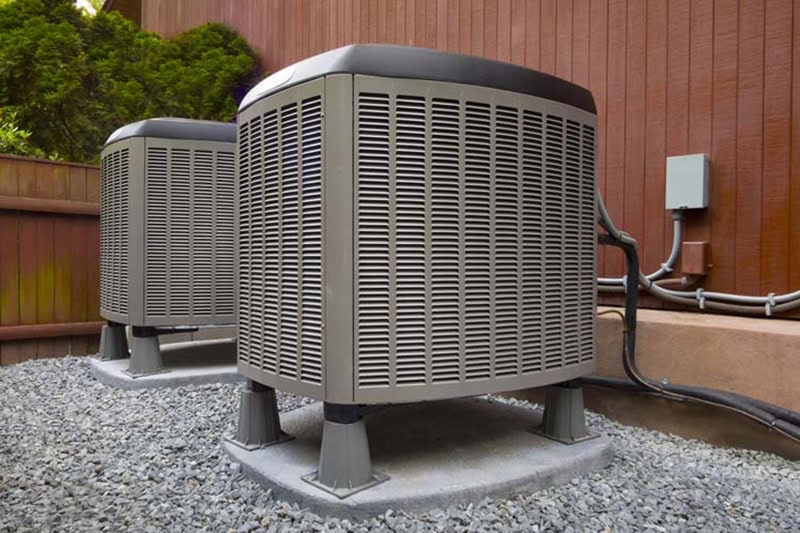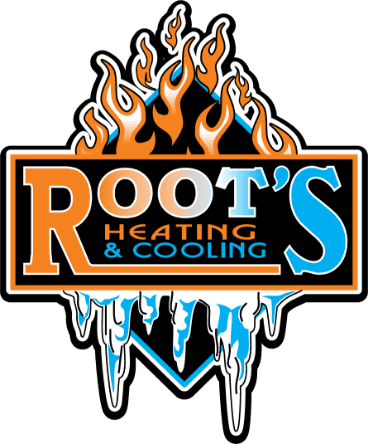What Homeowners Need to Know About the New HVAC Refrigerant

If you’re thinking about upgrading your air conditioning system or just keeping an eye on HVAC trends, there’s a big change coming in 2025 that every Alpena homeowner should know about.
Starting January 1, 2025, new HVAC systems will be required to use a more environmentally friendly refrigerant, known as R-454B. This change is part of a broader effort to reduce the environmental impact of heating and cooling equipment, and it’s something that both homeowners and HVAC professionals, such as those at Roots Heating and Cooling, need to be prepared for.
Why the Refrigerant Is Changing
The refrigerant currently used in most residential HVAC systems is R-410A. While it’s been the industry standard for years, it has a high Global Warming Potential (GWP), which means it contributes significantly to greenhouse gas emissions when leaked into the atmosphere.
To address this, the U.S. government passed the American Innovation and Manufacturing (AIM) Act , which mandates a phasedown of high-GWP refrigerants.
That’s where R-454B comes in. This new refrigerant has a GWP that’s almost 78% lower than R-410A. It’s a step toward cleaner, more responsible air conditioning without sacrificing performance or reliability.
What Is R-454B, Exactly?
R-454B is a blend of two refrigerants—R-32 and R-1234yf. It’s designed to closely match the performance characteristics of R-410A while offering significant environmental benefits.
It’s non-ozone-depleting and classified as an A2L refrigerant, which means it’s mildly flammable but considered low toxicity. While that may sound concerning, rest assured: when handled by trained HVAC technicians, R-454B is a safe and reliable choice for your Alpena, home’s comfort system.
Benefits of R-454B Refrigerant
For homeowners in Alpena County and all the neighboring communities who are considering a new air conditioning installation or heat pump upgrade, there are several reasons to feel good about R-454B:
- Lower Environmental Impact – With its reduced GWP, R-454B supports efforts to combat climate change.
- Improved Efficiency – Systems designed for R-454B are engineered for improved energy performance, which can lead to lower utility bills over time.
- Familiar Performance – R-454B operates under similar conditions to R-410A, so system performance and reliability remain consistent with what homeowners are used to.
- Future-Proof Equipment – Choosing a system that runs on R-454B now means you’re aligned with future regulations and won’t be forced to make a quick upgrade later.
Can You Retrofit an Existing HVAC System with R-454B?
Unfortunately, no. R-454B is not a “drop-in” replacement for R-410A. The two refrigerants have different chemical properties and require different components.
If your system was designed for R-410A, it will continue to use that refrigerant until it’s time to replace the unit. The good news is that you don’t need to rush out and replace your existing system just because of the new regulation. R-410A will still be available for older systems for years to come.
What Homeowners Should Expect in 2025 and Beyond
If your air conditioning system is nearing the end of its lifespan, or you’re planning a new HVAC installation soon, it’s a good time to start talking with your HVAC contractor about R-454B-compatible equipment. Many manufacturers, including Trane, Carrier, and Lennox, have already started rolling out units built for the new refrigerant. Here’s what to expect as this transition continues:
- New Equipment Will Use R-454B – Any new air conditioners, heat pumps, or other HVAC systems manufactured after January 1, 2025, must use a low-GWP refrigerant. R-454B is the most widely adopted choice.
- Availability Could Be Tight – As manufacturers ramp up production and distributors shift inventory, there may be some supply challenges in the early stages of the transition. Planning ahead with your HVAC company is key.
- Technician Training Is Critical – Because R-454B is mildly flammable, HVAC professionals are required to follow new handling guidelines. This helps ensure installations are safe and up to code.
- Cost of R-410A May Increase – As the supply of the older refrigerant shrinks, prices for servicing existing systems could go up. If you’re trying to decide whether to repair or replace an older system, this may factor into your decision.
How to Prepare as a Homeowner
You don’t need to become an HVAC expert overnight, but being informed about the R-454B transition can help you make smarter choices about your Alpena home’s comfort system. Here are a few tips:
- Schedule an HVAC system inspection – If your air conditioner or heat pump is more than 10 years old, now’s the time to evaluate its condition and plan for eventual replacement.
- Talk to a trusted HVAC company – Ask whether your next system will use R-454B and what that means in terms of maintenance, cost, and efficiency.
- Consider upgrading sooner – If you’re already considering a system replacement, you may want to make the move before demand surges and prices potentially rise.
- Don’t panic – This transition is manageable with the help of experienced HVAC professionals. Reliable comfort and cool air will still be within reach, all while being better for the planet.
Invest in Cleaner Cooling
The shift to R-454B refrigerant marks an important moment in the HVAC industry. It represents a commitment to more sustainable cooling technology without sacrificing comfort, performance, or reliability.
While it does require some planning and adjustment, especially for HVAC technicians and manufacturers, Michigan homeowners in Alpena, and surrounding areas will benefit from quieter, more efficient, and environmentally responsible air conditioning systems in the years to come.
If you’re unsure whether your current air conditioner or heat pump is ready for the future, give Roots Heating and Cooling a call at 989-871-2067 or request service online. Our experienced team is here to answer your questions, inspect your system, and help you make the right decision—whether that’s a simple repair or a full upgrade to the next generation of HVAC technology.
